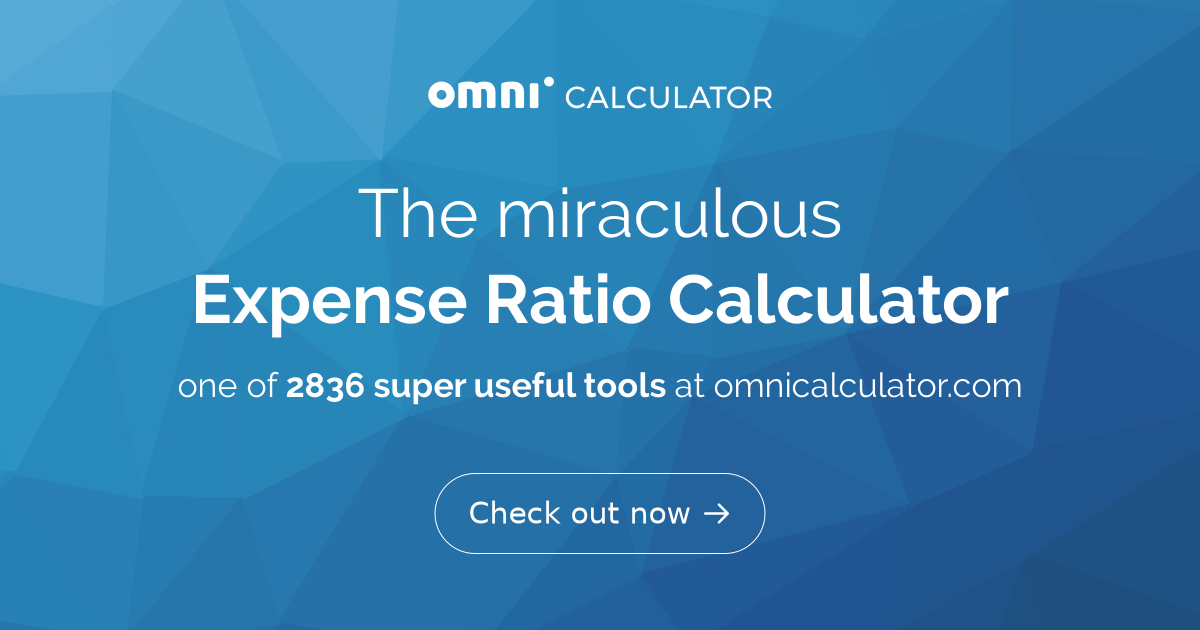
Typically, any expense ratio higher than 1 percent is high and should be avoided. Over an investing career, a low expense ratio could easily save you tens of thousands of dollars, if not more. However, it’s important to note that many investors choose to invest in funds with high expense ratios if it’s worth it for them in the long run. What’s important to note about all expense ratios is that you won’t receive a bill. When you buy a fund, the expense ratio is automatically deducted from your returns. When you view the daily net asset value (NAV) or price for an index fund or ETF, the fund’s expense ratio is baked into the number you see.

Great! The Financial Professional Will Get Back To You Soon.
That’s why we put together this handy calculator to help you get a handle on how much money you would save and make by choosing different funds with different expense ratios. The expense ratio calculator makes it easy to get the information you need. Just enter the expense ratio and expense account data for the advisor-sold wrap and non-wrap programs and the expense ratio calculator will show you how much of your assets are being used in these advisement fees. A return on assets shows how efficiently a company uses its assets to generate profits.
How Expense Ratios Are Calculated
In general expense ratios have been trending downward, which is great for long-term investors since they will pay less for their investments. In recent years expense funds have dropped significantly, with a few funds not charging a cent (and many more charging fees under 0.20%). To get a sense of which funds have low expense ratios at the moment, check out our list of low-cost index funds. As you compare investments, keep in mind that there’s no one-size-fits-all approach to mutual funds and ETFs, and expense ratios are only one component of an investment.
How to Calculate Ideal Food Cost Percentage
While minimizing expense ratios is an essential aspect of investment success, it is also crucial to consider other factors such as investment strategy, management quality, and overall performance. The impact of expense ratios on investment performance becomes more pronounced over time due to the compounding instructions for form effect. The expense ratio refers to the percentage of an investment’s assets that are used to cover the ongoing expenses related to the management and administration of that investment. The % can be less or more depending on whether the fund is actively or passively managed or a regular or direct plan.
What is your current financial priority?
- A current ratio of 1.5 or higher is generally considered a good indicator of liquidity.
- Passive investment strategies, such as index funds and ETFs, generally have lower expense ratios than actively managed funds.
- The net expense ratio is the actual percentage of an investment’s assets that are used to cover its ongoing expenses after accounting for fee waivers, reimbursements, or other adjustments made by the investment manager.
- Actively managed funds and those in less liquid asset classes tend to have higher expense ratios, while passively managed index funds feature the lowest expense ratios.
- Major brokers offer tons of mutual funds without a sales load and with very low expense ratios.
Solvency indicates your company’s ability to meet its obligations on an ongoing basis, not just in the short term. The debt-to-equity (D/E) ratio is the best way to calculate your business’s solvency. To get this metric, divide your total liabilities by your total equity. The basic food cost formula expresses the relationship between your cost of ingredients and your total food sales. A financial professional will offer guidance based on the information provided and offer a no-obligation call to better understand your situation.
The first considers an initial investment for which we will use the formula for the money’s future value. The second one considers a yearly periodic investment for which we will use the formula for the future value of an annuity. While the ideal ratio varies by establishment type, most successful restaurants aim to maintain their food cost between 28-35% of menu prices. Using loss development factors can help predict ultimate losses for more accurate ratios.
Besides his extensive derivative trading expertise, Adam is an expert in economics and behavioral finance. Adam received his master’s in economics from The New School for Social Research and his Ph.D. from the University of Wisconsin-Madison in sociology. He is a CFA charterholder as well as holding FINRA Series 7, 55 & 63 licenses.
When you’re in the weeds of running your business each day, it can be difficult to zoom out and see how well your company is performing. Seasonal dips and peaks in demand may make it seem like you’re doing better (or worse) than you are. Certain financial calculations, however, can give you a clearer picture of your business’s financial health and help you make better decisions moving forward. Calculate separate loss ratios for different market segments, products, or geographic regions to identify areas of strength or concern.
And that $10,000 fee is not just the money today, but the greater amount it could compound into in 10 or 20 years or more. Expense ratios vary widely, depending on the investment strategy used by the fund. Other factors to consider include past performance, risk, and the fund manager’s track record. If you’re looking for simple, hands-off and affordable investing, an index fund is the right way to go.
